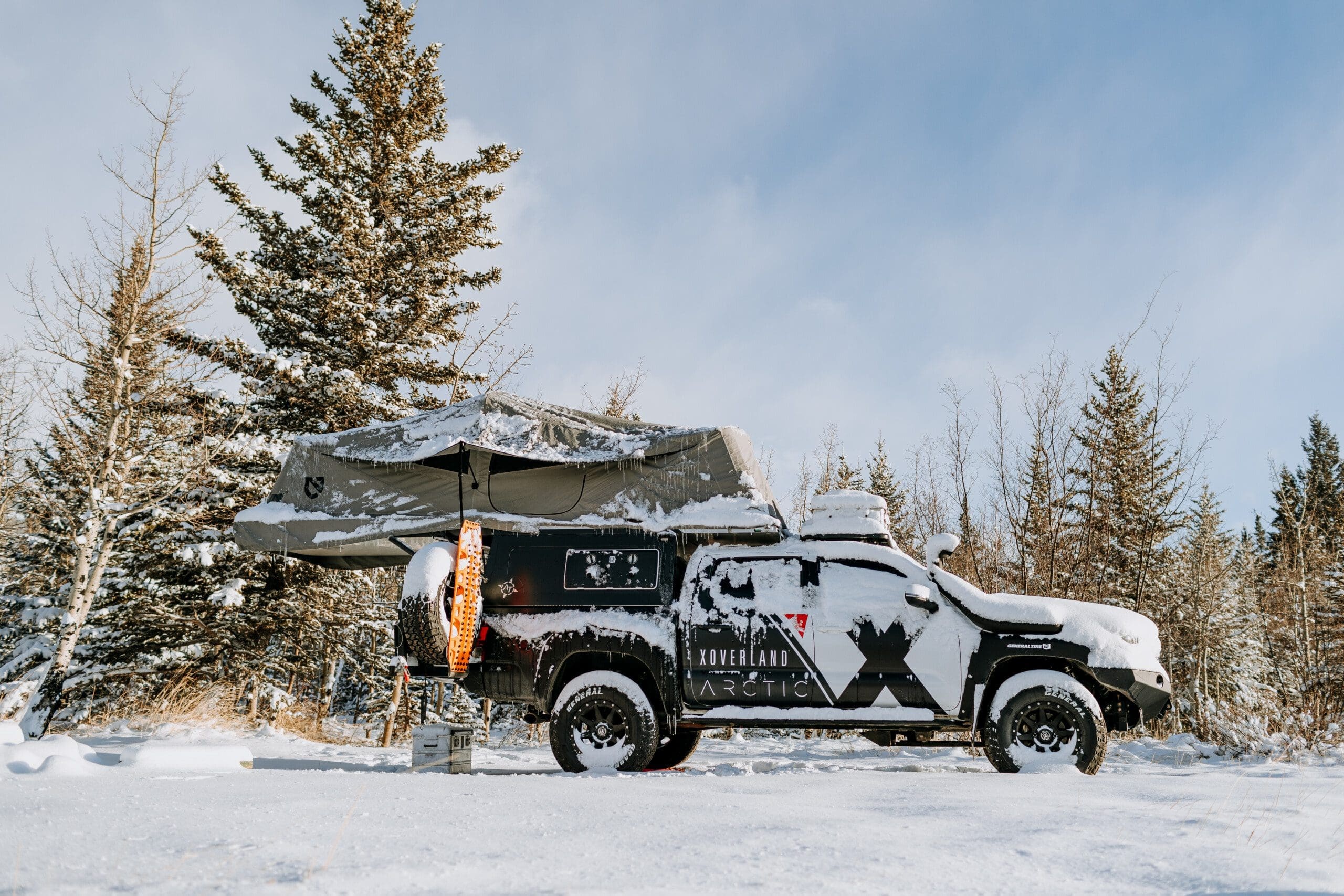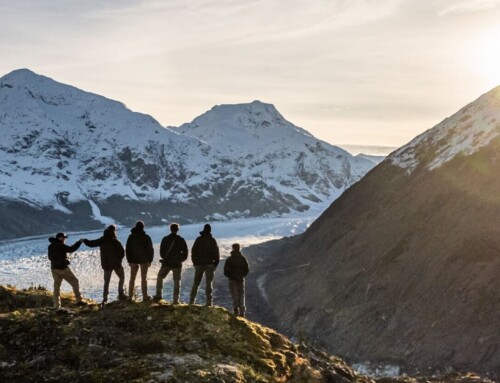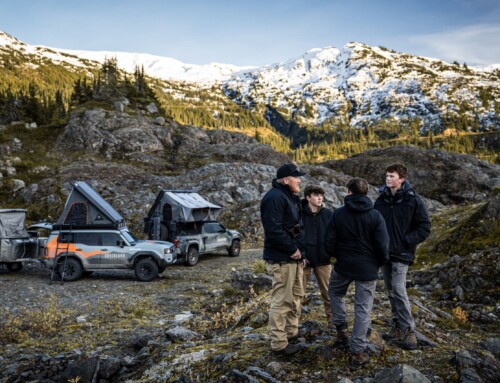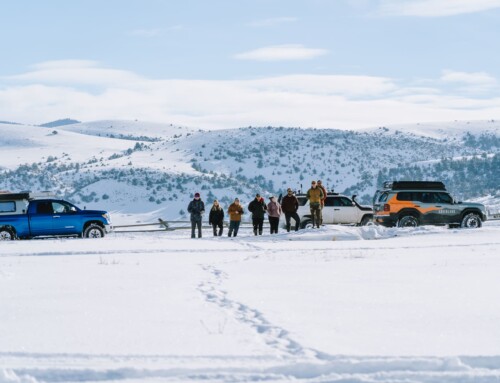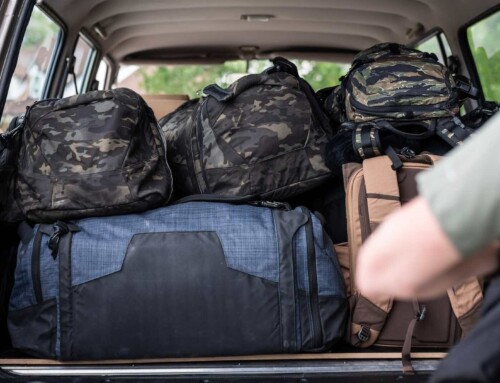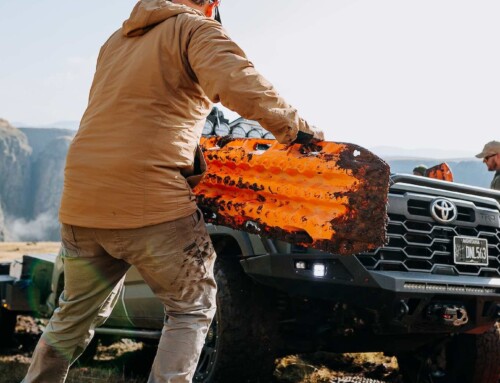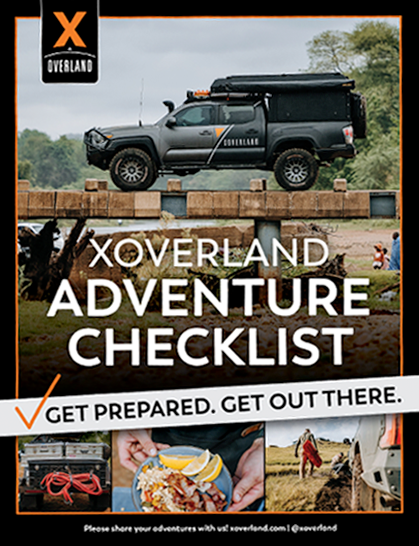The snow is piling up, the temperatures are dropping, and the days continue to grow even shorter. Time to store your camping gear for the season and begin dreaming about where you’ll go next summer. Right?
These may be familiar thoughts every year when winter rolls around, but you don’t have to succumb to them. Instead, you can make the choice to get outside this winter!
Whether you decide to head out for a winter weekend of vehicle-based adventuring or make the decision to go overlanding through the farthest reaches of the Northern Hemisphere, we are here to assist in keep you safe and enjoying the experience. We’ve gathered our best tips, along with links to videos, blog posts, and the best gear recommendations to help you get the most out of winter. Enjoy!
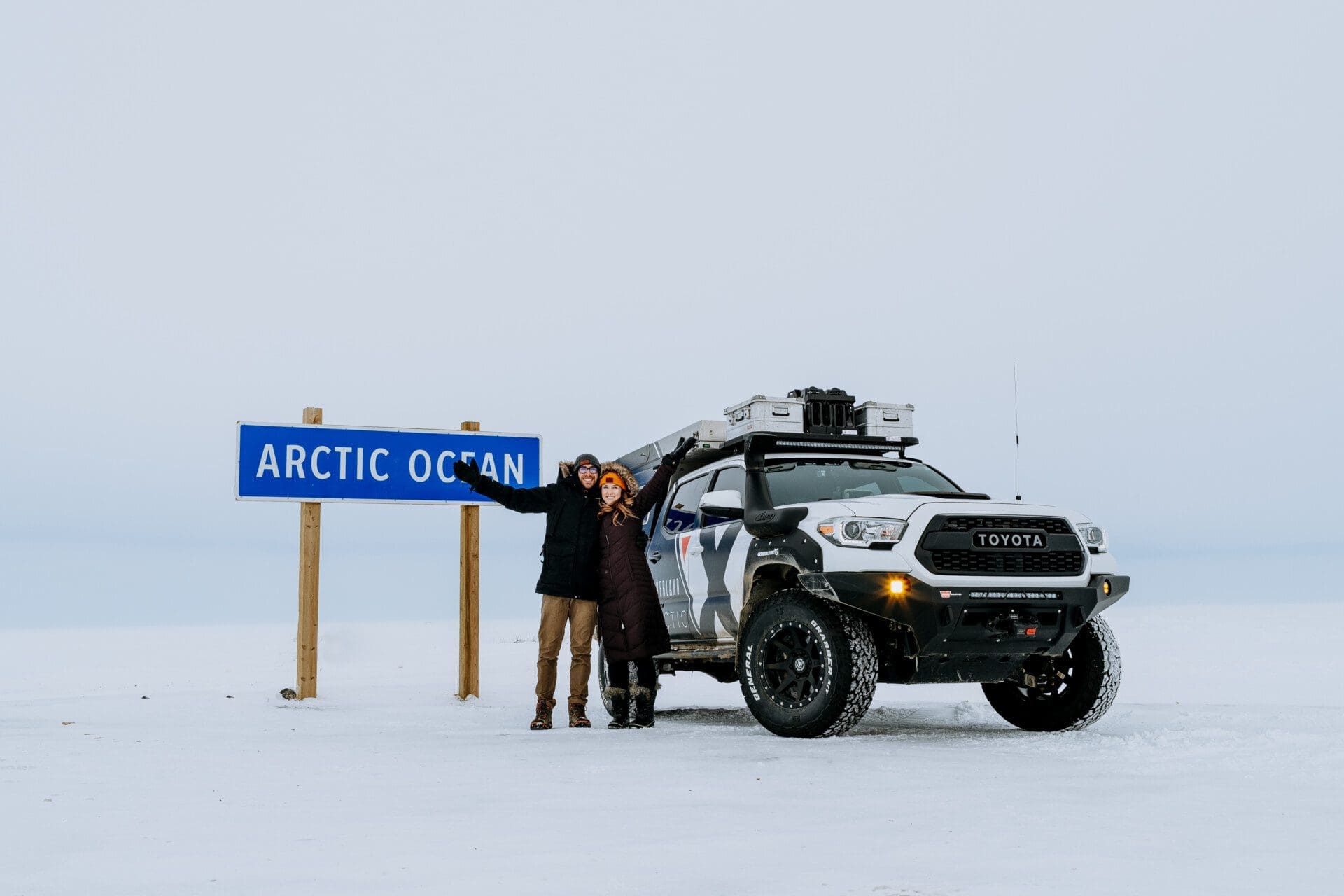
Most people think of heading south in winter, but why not head north for your overlanding adventure?
Why Go Overlanding in Winter?
Winter is its own special season with a host of unique sensations that can only be had by getting out there in it. There is no better way to do that than to go camping! Here are just a few of the reasons why we recommend winter camping or overlanding:
- There are fewer people out and about during the winter, so you will find campgrounds and wild camping areas you’re able to reach are much less crowded.
- The landscape in winter is especially beautiful in its own unique way, and to sit around a blazing campfire under a cold, clear, starry winter night is something to be cherished at this time of year.
- There are no bugs, flies, or mosquitos to deal with in camp. Winning!
- There are lots of fun activities you can combine with winter camping like skiing, snowshoeing, ice fishing, or winter wildlife watching and photography.
Going winter camping is a great way to get out and avoid the dreaded “Cabin Fever.” In areas like where we live in Montana, winters are long. Getting out for some winter camping keeps one having fun and enjoying the season, rather than slowly going crazy from too much time spent indoors!
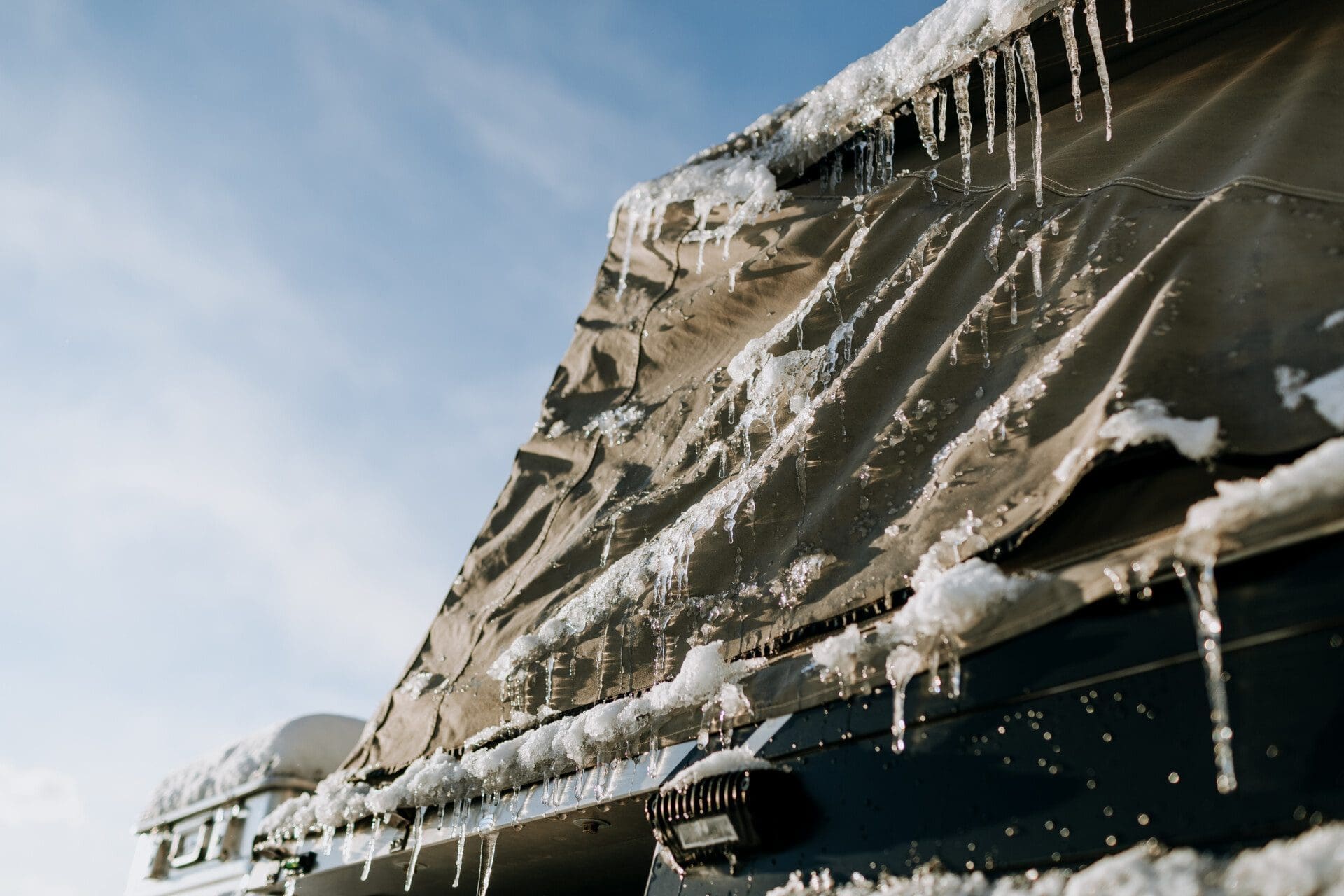
Winter camping differs from summer camping in some fundamental ways that are worth being aware of.
How is Winter Camping Different from Summer Camping?
Camping in winter is not “shoulder-season”—camping at the edges of summer during the spring or fall—it is a whole new experience. Camping in winter means shifting your mindset and being aware of some fundamental changes that will help you properly prepare and enjoy your experience to the fullest.
Here’s what you need to know:
- Winter days are shorter than those of summer and feature far less daylight. Therefore, if you’re accustomed to having solar energy power your camp system, you need to rethink your energy needs and supply.
- There is often far less access available to forest service roads and trails, simply because they get snowed in during the winter months. Some are closed altogether to wheeled vehicles of any kind. It is also possible that some campgrounds open during summer months will be closed at this time of year, so plan accordingly.
- Weather can be extremely cold and, therefore, dangerous. You need to prepare yourself for the worst-case scenario regarding snowstorms and frigid air temperatures.
- Water has the potential to freeze while winter camping, and so whether you’re figuring out your potable water storage solution or considering bringing your chemical-water-based cassette toilet, you need to be prepared for this fact.
- Winter camping features different outside activities than what is popular during the summer. Instead of hiking or mountain biking, the winter camper will benefit from packing along some snowshoes, cross-country skis, or an ice fishing pole.
Fundamentally, if you take the time to properly prepare for winter camping, you will find it to be a unique and enjoyable experience you look forward to each season!
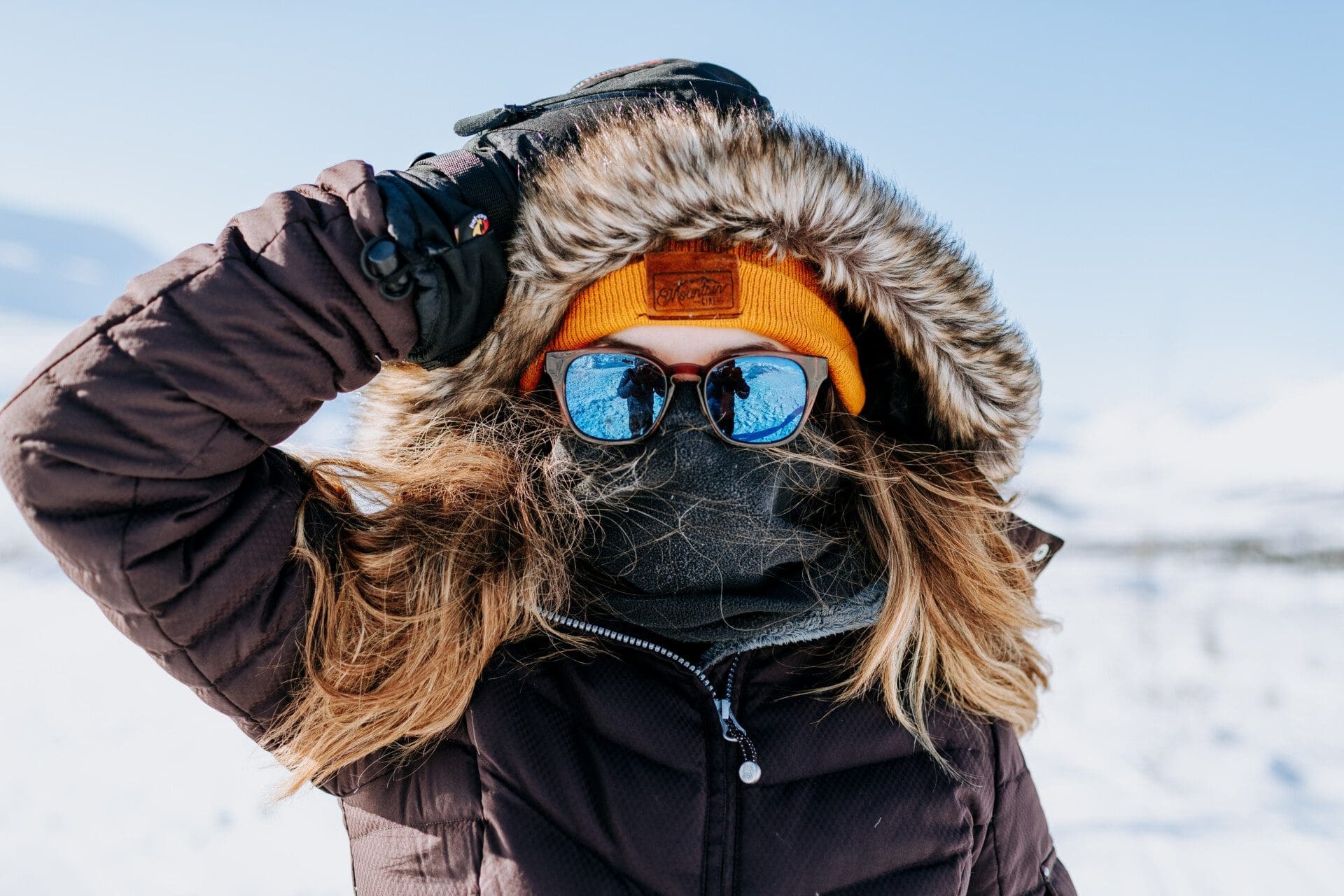
Having the right clothing is essential to thriving in the winter environment!
What Gear Do You Need for Winter Camping?
Now that we have emphasized the importance of being properly prepared to go winter camping, what is the essential gear you need to stay safe and enjoy your experience? Let’s take a look!
Winter Clothing
Let’s start with clothing. While filming Season 5, Nordic Series, we found Norwegians fond of this expression: “There is no bad weather, just bad choices in clothing.” We couldn’t agree more, especially when it comes to winter camping!
“There is no bad weather, just bad choices in clothing.”
Here is a list of clothing necessities to stay warm, dry, and comfortable during your winter camping season:
- An effective layering system (check out the blog!) that consists of a base layer, mid-layer, and outer shell. We also highly recommend a hooded down parka with a fill-power of at least 700. A heavy-fill down parka is like wearing a sleeping bag and will keep you warm when the temperature dips to well-below freezing.
- A well-insulated, sturdy, waterproof pair of boots and warm socks. (Consider adding Hot Hands Toe Warmers!)
- Warm gloves with reasonable dexterity. (To keep your fingers very warm, pack along one large pair of mittens and drop a hot pack into them!)
- A warm, cozy, well-fitting winter hat built to withstand the weather.

To enhance your sleep system for winter camping, consider adding a heating element to your overland outfit.
Winter Sleep System
There are summer-rated sleeping bags, three-season-rated sleeping bags, and winter-rated sleeping bags. We recommend you get your hands on a winter-rated sleeping bag for winter camping.
Remember that with sleeping bags, there is a “comfort” rating and a “survival” rating. Ideally, you want to be comfortable and not merely surviving, so find a bag with a comfort rating that matches the temperatures you’re likely to be sleeping in.
Note: If you have a sleep system in your overland vehicle that features a heating element or a slide-in camper with a built-in heater, you still need a proper sleeping bag in case this equipment fails.
If you’re used to sleeping on a thin foam pad during the summer, obtain a thicker, air-based pad to provide increased insulation between your body and whatever surface you’re sleeping on. Even if you’re in a heated sleep system, the surface you’re sleeping on is likely to get cold. The air-mattress or pad will insulate you from this surface and better retain your body heat.
Reliable Cook System
When temperatures drop below freezing, some cook systems operate better than others. Pay attention to this fact and make sure you are packing along a cook system that operates reliably in very cold temperatures.
At the bare minimum, you’ll want to be able to rapidly heat water, even bringing it to a hard boil to make freeze-dried meals or coffee and tea.
The iso-butane fuel used in quick-cook systems like the popular Jetboil unit suffers a decrease in pressure output that corresponds with a dropping temperature. To counteract this reaction, try keeping your fuel canisters somewhere warm, even if that’s in your coat pocket. Also, with the decreased fuel pressure, these stoves are harder to light using their built-in systems, so pack along some all-weather matches as a backup.

Having what you need to build a warm campfire will enhance your winter camping experience!
Well-Equipped Fire Kit
One of the joys of winter camping is a warm campfire to sit around and enjoy on a cold, clear night. An added bonus is that you can cook over a hot fire, so brats, burgers, chicken, and steak all become culinary possibilities for your winter camp!
To ensure a quick easy campfire with plenty of fuel, pack along these items:
- Chainsaw: If you are camping where it is legal to harvest firewood and you have the proper permits, having a chainsaw along is an easy way to obtain all the firewood you need without having to pack it along. We are growing fond of electric chainsaws for their ease of use and low maintenance requirements.
- Hatchet or Axe to chop up kindling.
- Wind/Weatherproof Matches and Fire-Starting Material: When it is very cold, there is nothing better than having the ability to quickly build a blazing campfire. Packing plenty of quick-start fire material along with some weatherproof matches makes this an easy task! Spend more for quality here. You may need to build a fire for more than comfort!
- A portable grate for cooking: Unless you have a designated fire ring available, we highly recommend using a portable fire pit to reduce the environmental damage to primitive campsites caused by creating fire rings on the ground. Most manufactured fire pits even offer a grate that you can use for cooking over the hot coals.
Winter Waste Management Kit
The ground in winter is often frozen, making digging a cathole to do your business very difficult or even impossible, not to mention the ground may be over a foot or more beneath a hardened snowpack.
Since established campgrounds are often uncrowded in winter, you may find good camping and a pit toilet nearby.
If you prefer to wildcamp, consider packing along a portable waste disposal system such as a Campco Bucket Toilet Kit. That way you can be comfortable when nature calls and easily pack out your waste to keep the camping area clean and sanitary for the next visitor.
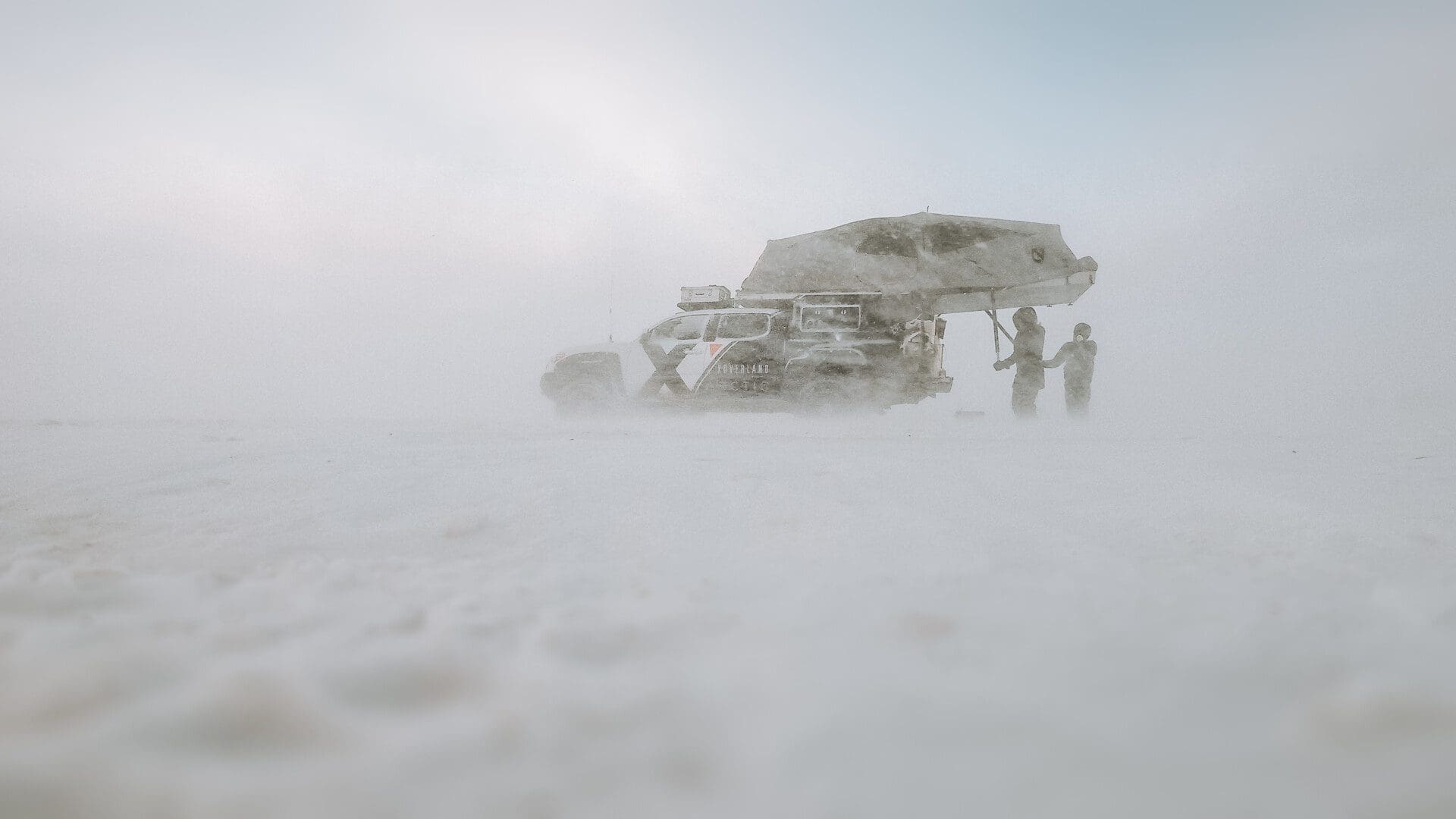
Do you have what you need if the weather turns extremely cold and dangerous?
Safety Tips for Winter Camping
While winter camping is super fun, it comes with an increased level of risk due to the possibility of extremely cold weather and heavy snow. Here are our best tips to keep you safe and having fun out there!
- Be mindful of the weather forecast: If it looks like a massive storm will be impacting the area and/or the temps are going to drop to dangerously low levels, consider rescheduling your trip for when the weather moderates.
- Bring a sleeping bag rated for the worst-case scenario: If the temperature drops to an unexpectedly low level and/or you find that your heating system is failing, are you prepared to safely survive the night?
- Bring extra food and water: Packing extra freeze-dried meals is an easy way to ensure you have plenty of food to survive for an extra few days in something goes wrong. For extra water, remember that if there is snow around, you can always create a water supply, but that process is extremely inefficient. Better to have extra water packed.
- Know the limits of your vehicle, equipment, and gear: Spend some time figuring out the limits of your gear and function within that capacity. Driveway camping is a very effective means of testing all of your equipment and gear before you go far afield, and it’s fun!
- Be sure to have adequate recovery equipment appropriate for snow and ice: We recommend Maxtrax, a quality shovel, a recovery strap, and possibly a set of tire chains. (Make sure the chains are the correct size for your tires and practice putting them on at home!)
- Let people know where you’re going, and pack along a satellite communication device capable of sending an S.O.S. signal.
- Find a partner to join you! Having a partner means redundancy of essential items, easier recovery, and companionship. All are wins for winter camping. Make sure they are properly prepared lest they become a liability rather than an asset! For ideas about how to build your own overlanding team, check out this episode from our Proven series on team dynamics.
- Don’t forget to pack some high-quality sunglasses! Sun reflects off the snow and can create a powerful glare, making sunglasses a necessity for both driving and fun around camp.
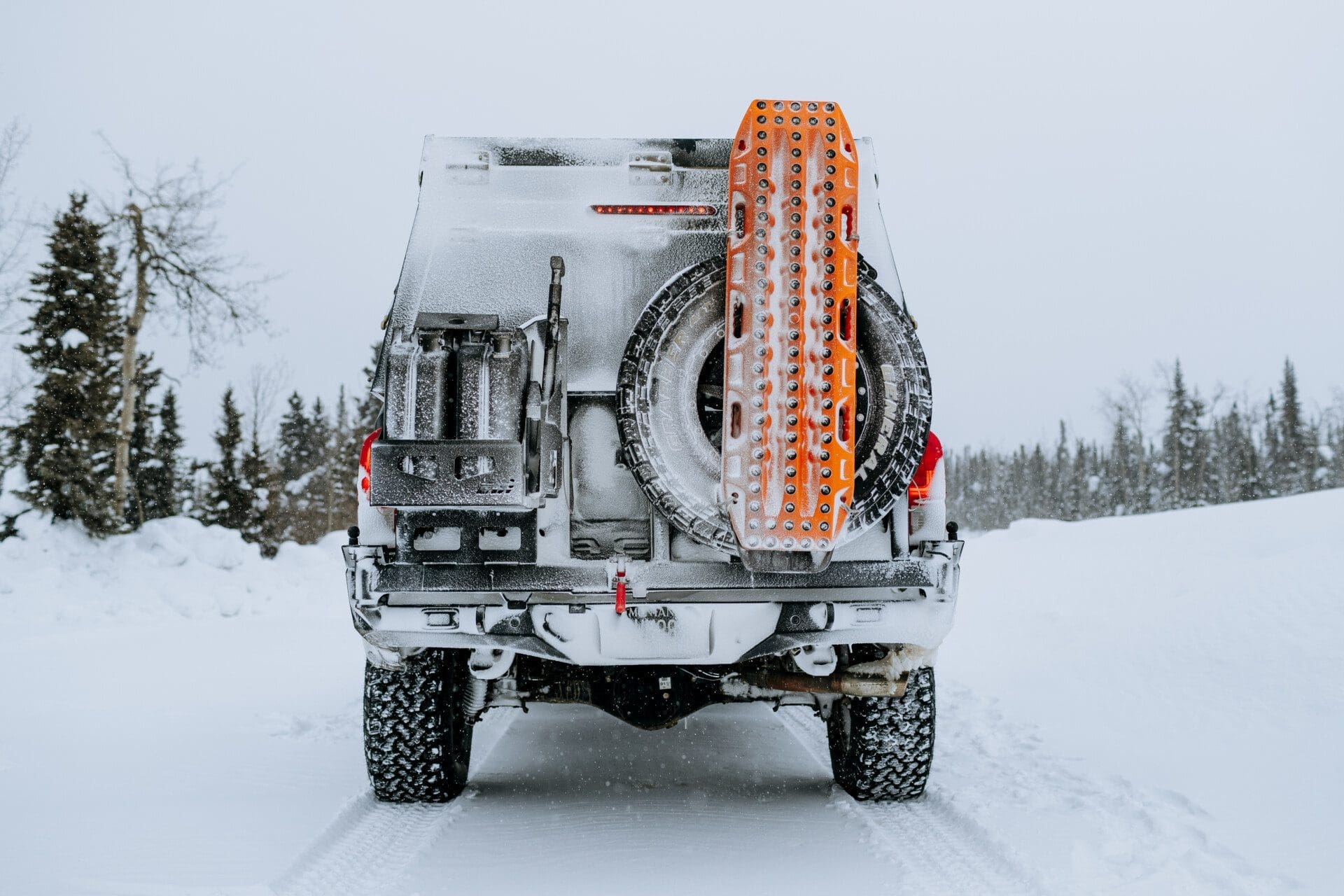
Have recovery gear along that’s appropriate for winter conditions featuring snow and ice.
Final Winter Camping Pro Tips
Now that we’ve convinced you to try winter camping, here are some final pro tips to help make your first outing a successful one!
- Fuel up before you go! Better to return home with more fuel than run out in the field. If you have an equipment failure, you can always survive in the heated cab of your vehicle. Just make sure to always keep the tailpipe clear of snow.
- Test your vehicle’s starter battery and replace it if need be. Charge your jump pack before your trip. An extremely cold night is no time for a dead battery!
- If you’re running a slide-in system such as a Four Wheel Camper, be sure to top off your propane tanks.
- If you have an indoor galley, you have lots of options. If your only option is to cook outside, consider pre-cooking hearty meals at home, vacuum sealing them, and then reheating in a pot of hot water.
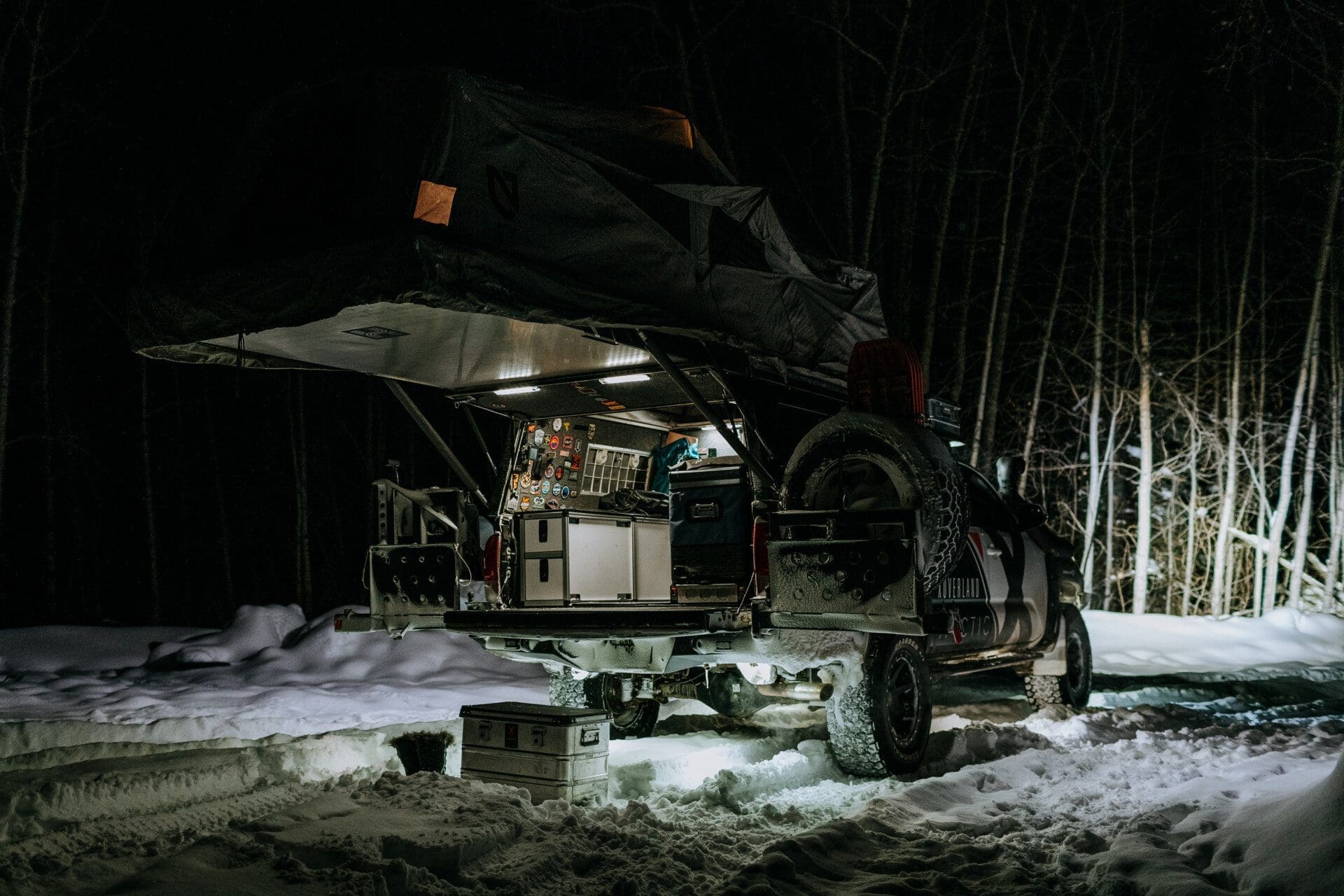
Winter nights are long and dark. Brighten up your camp and your spirits with a powerful lighting system!
- Consider building a heating system into your overland vehicle. A heat source is an absolute game-changer when it comes to winter camping, as it provides you with a warm, dry, and comfortable space to get out of the elements.
- Remember that coolers will protect foods from the cold in the same way they will protect them from heat. You can use them accordingly.
- Winter nights are long and are made much happier when there’s lots of light around. Be sure to have ample LED interior lighting and replace the batteries in your headlamps before you go. Plenty of scene lighting around camp makes things even better!
- A bottle of hot water placed inside your sleeping bag will add warmth, especially around your toes!
- Condensation can be a real issue when camping in winter. Be sure to dry out your tent, sleeping bag, or camper system as soon as possible afterward. If you have an enclosed sleep system, be on the lookout for black mold and clean/disinfect immediately.
- Plug into your 120v outlet at home before you leave to make sure your house batteries are fully charged!
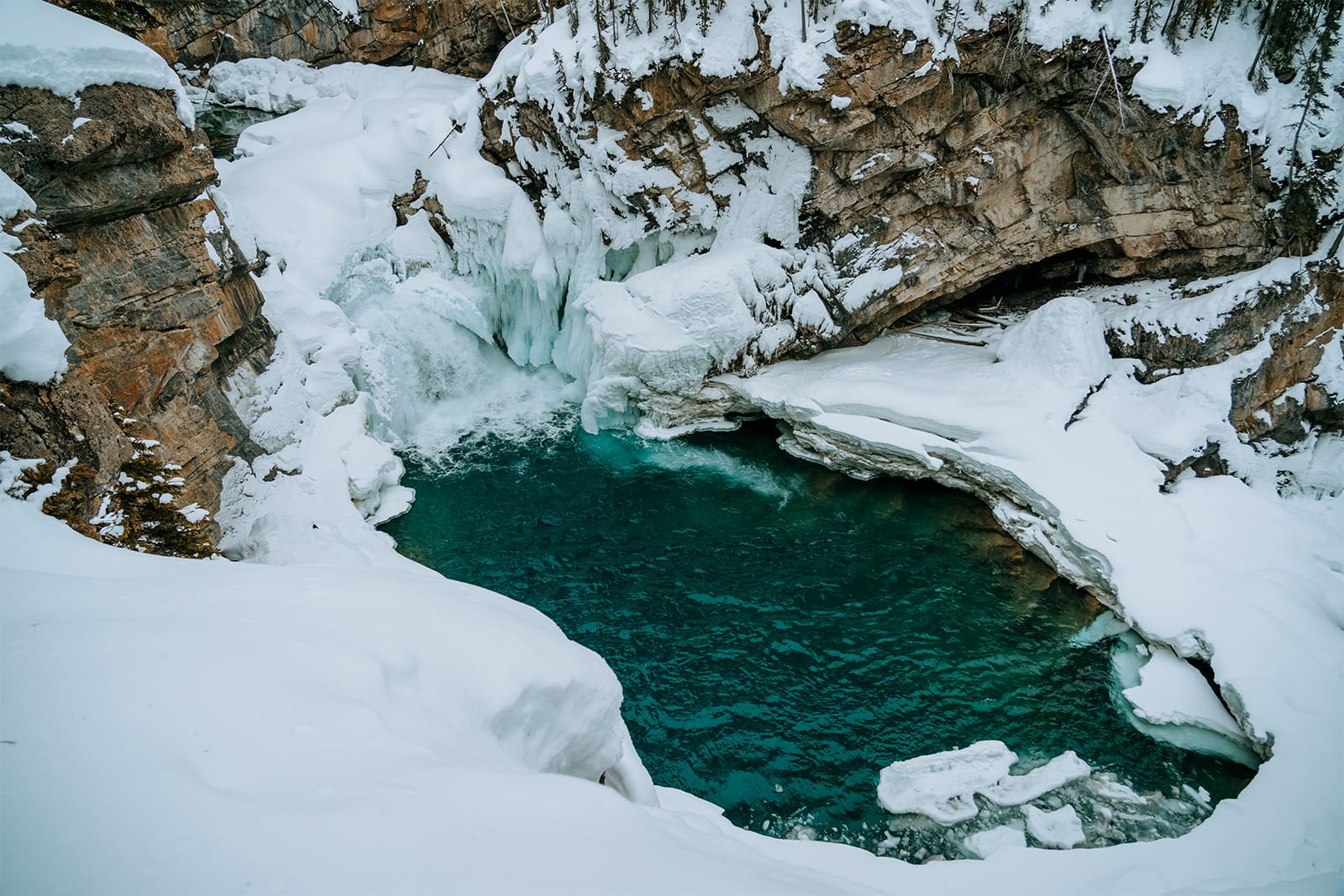
With these tips in mind, you’re now ready to get out there this winter and #startsomewhere!
Be safe, have fun, and enjoy your winter!⛄

